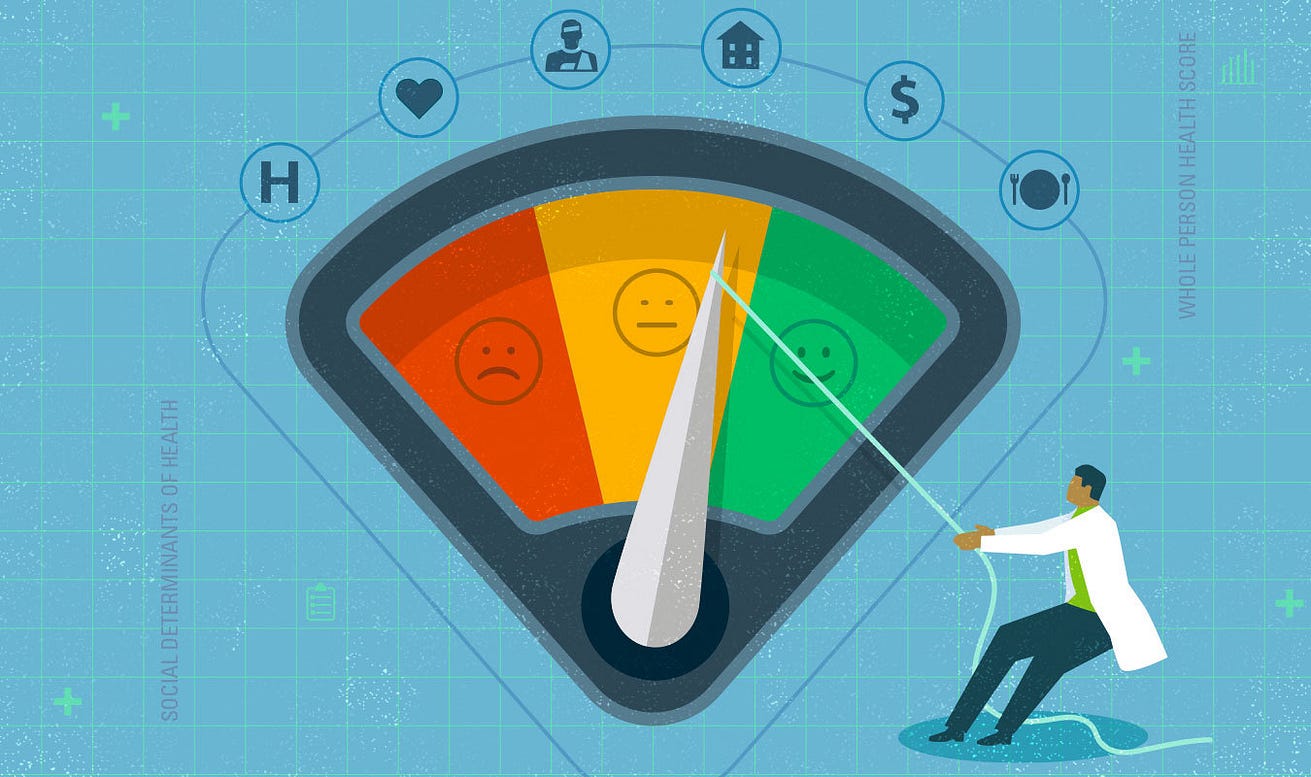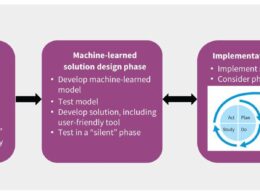NEJM Catalyst Innovations in Care Delivery 2022; 08
Namita Seth Mohta, MD, Edward Prewitt, MPP, Lisa Gordon, and Thomas H. Lee, MD, MSc
July 20, 2022
This site version was edited by:
Joaquim Cardoso MSc.
Health Transformation — Research and Advisory Institute
Whole Person Health Unit
July 20, 2022
The limits of health care on health are well accepted.
A widely cited statistic holds that individual behaviors, socioeconomic factors, and physical environment contribute to 80% of clinical outcomes in a community, with the remaining 20% of clinical outcomes coming from clinical care.
Should clinicians and health care leaders accept these boundaries and keep to a narrow lane?
A widely cited statistic holds that individual behaviors, socioeconomic factors, and physical environment contribute to 80% of clinical outcomes in a community, with the remaining 20% of clinical outcomes coming from clinical care.
Should clinicians and health care leaders accept these boundaries and keep to a narrow lane?
In this issue’s Insights Report, “Health Care Is Confronting the Social Determinants of Health,” and its related Insights Interview, which are based on a survey of NEJM Catalyst Insights Council members at organizations directly involved in care delivery globally, fully 62% of respondents say that their organization is taking a proactive approach to addressing SDOH (Social Determinants of Health)
Although the report’s advisor, Damon Francis, MD, of Alameda Health System and Health Leads, warns that social problems require a societal response, nonetheless 59% of Insights Council members globally say that SDOH initiatives at their organization have improved patient health.
… although social problems require a societal response, nonetheless 59% of Insights Council members globally say that SDOH initiatives at their organization have improved patient health.

An as example, the In Depth article in this issue, “The Whole PERSON Health Score: A Patient-Focused Tool to Discover Nonmedical Determinants of Health,” by Dhruv Khurana, MS, MA, PhD, and colleagues describes Riverside University Health System’s development of a survey to assess six factors that affect patient lifespan, mortality, and longevity:
- Physical Health,
- Emotional Health,
- Resource Utilization,
- Socioeconomics,
- Ownership, and
- Nutrition and Lifestyle.
The survey tool has led to more referrals from primary care physicians to nonmedical resources.
Other content in this issue addresses the range of care delivery challenges today.
“The Recovering Together Initiative: Integrating Psychosocial Care into ICUs” by Ana-Maria Vranceanu, PhD, and coauthors at Massachusetts General Hospital and Harvard Medical School recounts a multiyear initiative to offer psychosocial services in the intense environment of intensive care units.
“Using Machine Learning to Reduce Burden on Infection Control Staff” by Rodrigo Pires dos Santos, PhD, and colleagues at Qualis and Tacchini Hospital explains an artificial intelligence tool developed at a hospital in Brazil that reliably speeds identification of health care-associated infections.
A case study by Robert A. Phillips, MD, PhD, and Stephanie C. Jones Wood, MPH, CPHQ, of Houston Methodist, “Building Workforce Resilience at the Individual and Organizational Levels,” discusses that health system’s two-pronged approach to strengthen the resilience of health care workers at the individual and organizational levels simultaneously.
“Payers and Public Health: A Novel Collaboration to Support Covid-19 Vaccination Uptake” is a case study by Dave A. Chokshi, MD, MSc, and associates about the New York City Department of Health and Mental Hygiene’s work with health plans to contact and counsel unvaccinated patients.
NEJM Catalyst Innovations in Care Delivery will continue to explore the broad work of health care organizations to address health through a theme issue devoted to SDOH and health-related social needs, to be published in April 2023.
About the authors & affiliations:
Namita Seth Mohta, MD
Executive Editor, NEJM Catalyst; Director, Serious Illness Care Program, Ariadne Labs, Brigham and Women’s Hospital, Boston, Massachusetts, USA; Faculty, Ariadne Labs, Brigham and Women’s Hospital and Harvard T.H. Chan School of Public Health, Boston, Massachusetts, USA; Assistant Professor of Medicine, Harvard Medical School, Boston, Massachusetts, USA
Edward Prewitt, MPP
Editorial Director, NEJM Catalyst
Lisa Gordon
Managing Editor, NEJM Catalyst
Thomas H. Lee, MD, MSc
Editor-in-Chief, NEJM Catalyst Innovations in Care Delivery; Co-Chair, NEJM Catalyst Editorial Board; Chief Medical Officer, Press Ganey Associates, Inc., Boston, Massachusetts, USA; Member, Editorial Board, New England Journal of Medicine
Originally published at https://catalyst.nejm.org on July 20, 2022.
Names mentioned
Damon Francis, MD, of Alameda Health System and Health Leads,
Dhruv Khurana, MS, MA, PhD, and colleagues describes Riverside University Health System’s development
Rodrigo Pires dos Santos, PhD, and colleagues at Qualis and Tacchini Hospital












